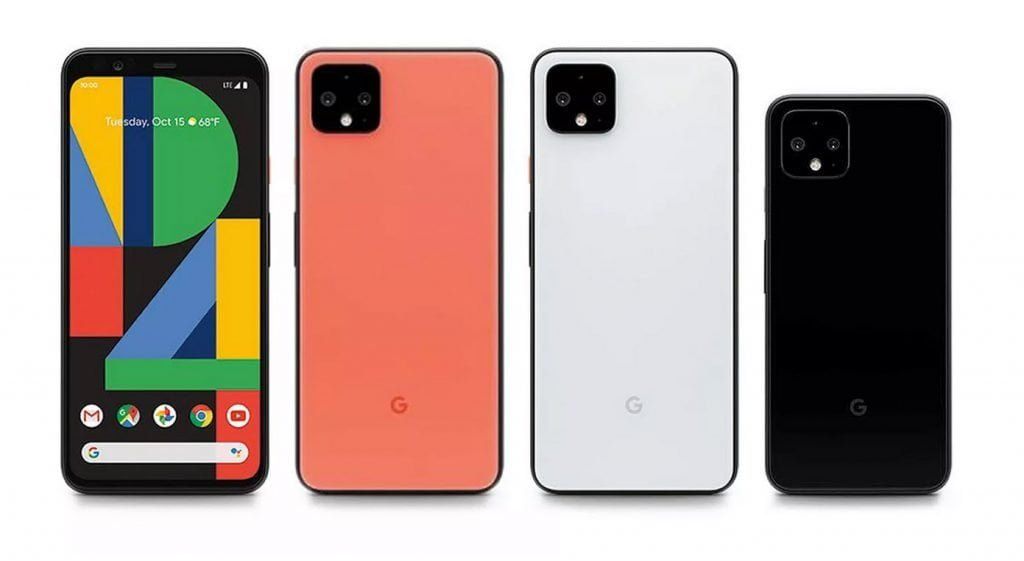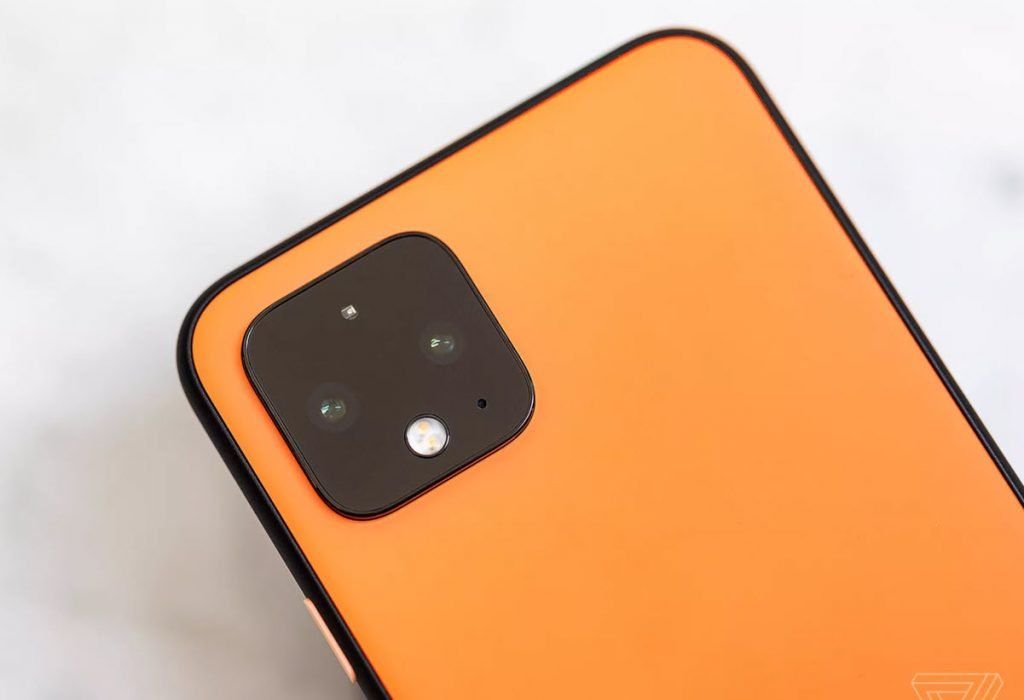The Google Pixel 4 and 4XL have finally been unveiled and we can say with most certainty that these are most-leaked phones perhaps in history. From what we can see, Google is finally starting to get more ambitious with the Pixel phone.
Lets get the pricing out of the way first, you can pre-order Google Pixel 4 and its bigger brother the today and shipping on October 24th and starts at $799 for the smaller one and $899 for the bigger one, and you can spend $100 on top of either to jump from 64GB to 128GB of storage. The phones will come in three colors; Just Black, Clearly white and a limited edition called Ohh so Orange.
The Google Pixel 4 comes with tonne of new technologies. Starting from face unlock like on the Apple iPhoneX or Huawei Mate 30 and 20. The phones also come a high refresh rate screen at 90Hz, a faster Google Assistant, and spatial awareness using radar. It also is introducing a new design language that’s a departure not only from previous phones, but from any hardware Google makes.
Google Pixel 4 needed to keep up in the camera department given that new phones like the iPhone 11 Pro had just taken the “best smartphone camera” crown away.
The Google Pixel 4 and 4 XL Spec Sheet
Display:
- Pixel 4: 5.7-inch, FHD+ resolution, 444ppi
- Pixel 4 XL: 6.3-inch, QHD+, 537ppi
- Both: 19:9 aspect ratio, “Smooth display” 90Hz refresh rate, “Ambient EQ” automatic color adjustment
- HDR with UHDA certification
Dimensions and weight:
- Pixel 4: 68.8 x 147.1 x 8.2 mm, 162 grams
- Pixel 4 XL: 75.1 x 160.4 x 8.2 mm, 193 grams
Battery:
- Pixel 4: 2,800mAh
- Pixel 4 XL: 3,700mAh
- Both: 18W fast charging, wireless charging
Cameras:
- Main: 12.2-megapixel, 1.4 μm pixel width, dual pixel phase detection, OIS, ƒ/1.7 aperture, 77-degree field of view
- Tele: 16-megapixel, 1.0 μm pixel width, phase detection, OIS, ƒ/2.4 aperture, 52-degree field of view
- Video: 1080p @ 30, 60, or 120 fps; 720p @ 240 fps; 4K @ 30 fps; Front Camera: 1080p @ 30 fps
Other specs:
- Memory: 6GB
- Storage: 64GB or 128GB
- Processor: Snapdragon 855
- Pixel Neural Core coprocessor
- Stereo speakers
- dual SIM (nano + eSIM)
- Active Edge
- Motion Sense radar
- Face unlock
- Gorilla Glass 5 on front and back
- IP68 dust and water protection
- Available in “just black,” “clearly white,” and “oh so orange” (limited edition)

Screen
The new Pixels lack notches at the tops of their screens and instead have large bezels because they’re fitting in the extra sensors that enable the face unlock and other features. It does make the front of these phones look a little unbalanced, but it’s no weirder than the bunny ears you get on notched screens.
The new 90Hz refresh rate, which Google calls “Smooth Display.” We’ve seen other Android phones with high refresh rate screens before, so it’s not exactly a revolutionary thing, though. The issue is that these phones come with less battery capacity compared to the competition so we are worried on how that refreshing screen of Google Pixel 4 will keep up.
The other new feature on the Google Pixel 4 screen is a corny brand name: “Ambient EQ.” It’s the technology that adjusts the color temperature of the screen to match the room, much like Apple’s iPads .
Motion Sense
This is one of the flagship’s best feature besides face unlock. The Pixel 4 has radar that enables the new Motion Sense technology. This is a literal radar chip at the top of the phone. It creates a hemisphere of spatial awareness about two feet in diameter around the Pixel when it’s sitting on a table.
The main thing Motion Sense does is pay attention to whether you’re even near the phone or if you’re reaching for it. If you walk away from it, it detects that and turns off the always-on display. If you reach for it, it activates the screen and face unlock.
Motion Sense lets you skip forward or back when music is playing, too. But the best feature is dismissing alarms and calls. When you simply reach for the phone, the volume drops when the phone sees your hand. Then you can simply wave to dismiss the call or snooze the alarm.

Google Pixel 4 Cameras
Pixel = Great camera and the Pixel 4 has come to claim back its crown. Unlike the mono rear camera days of the 3XL, Google has finally added a second camera to the back of the phone. It resisted for years, arguing that it could do more with one lens than other companies could do with two or more. But now there are two: a 12-megapixel main sensor and a 16-megapixel “2X” telephoto.
There’s only one selfie camera now, but Google set it to a 90-degree field of view. The Pixel 3 had 75-degree and 97-degree FoV lenses, for comparison.
During the launch Google focused on some Camera features like;
- Night mode with improved features
- Live HDR that better job showing you a real-time preview of what your final image will look like after it’s been run through Google’s computational photography algorithms.
- Better Portraits Pictures
When it comes to video, The Pixel still caps out at 4K at 30 fps, which is lower than the 4K60 footage the other phones can capture.

